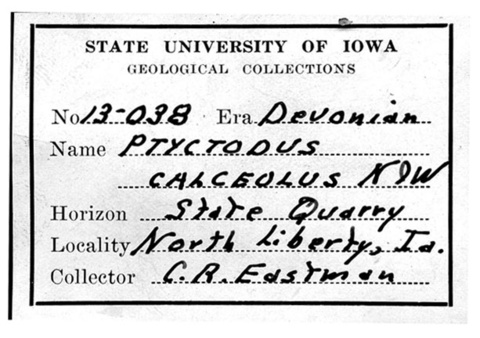Main navigation
Charles Rochester Eastman (1868-1918)

Charles Rochester Eastman was born to Austin and Mary Eastman in Cedar Rapids, Iowa on June 5, 1868. Eastman attended Harvard University for his undergraduate work graduating in 1891. From Harvard, Eastman received his MS from Johns Hopkins University in 1892 after which he studied at the University of Munich receiving his PhD in 1894. Also in 1892, Eastman married Caroline A Clark, whose father was a well-known maker of astronomical telescopes; they had one son. In Germany, he worked on detached teeth of a Chalk Measures shark. After his PhD, Eastman returned to Harvard and Radcliffe Colleges where he began teaching geology and paleontology and studied fossil fish under Louis Agassiz. He would later be appointed curator of vertebrate paleontology at the Museum of Comparative Zoology at Harvard University and in 1910 curator at the Carnegie Museum in Pittsburgh. In addition to his curation work, Eastman was an assistant geologist for the United States Geological Survey's New England Division. Through his professional work, Eastman launched his excellent career in studying fossil fish, his first interest was in placoderms, yet expanded to lung-fishes and ganoids and later modern fish.
Professionally Eastman was a fellow of the American Association for the Advancement of Science, in addition to being a member of the following societies: American Association of Anatomists, American Paleontological Society, American Society of Naturalists, American Society of Zoologists, the Boston Society of Natural History, the Geological Society of America, and National Geographic Society. His publications numbered over a hundred, including journal articles, scientific memoirs, State Geological Surveys, and a translated textbook of paleontology.
Charles Eastman contributed greatly to the knowledge of fish and their evolution; he died after drowning in Long Beach, New York on September 27, 1918.